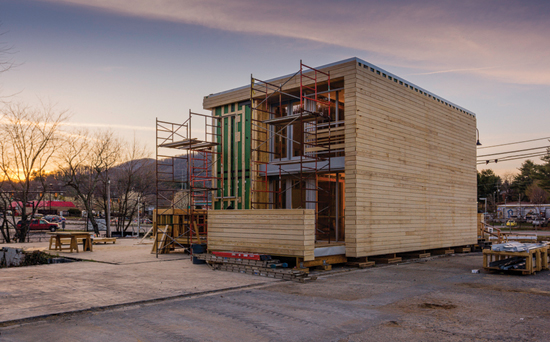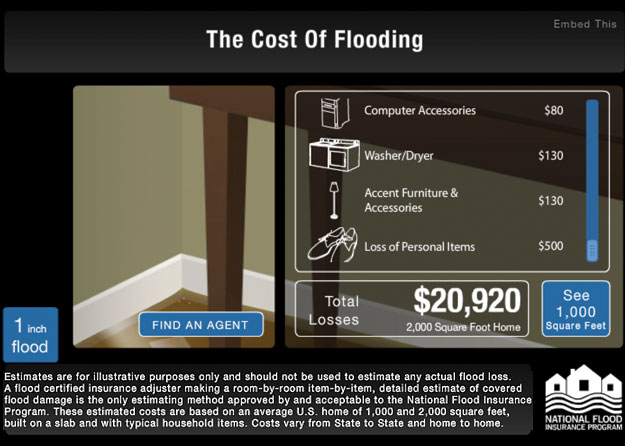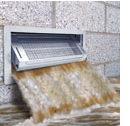Designing for Extreme Environments
Thermal Resistance
Opaque surfaces of building envelopes are the key barriers to weather and climatic conditions in all forms. Not the least of these conditions is the flow of heat energy into or out of a building. Properly insulated walls, roofs, and floors are critical to maintaining thermal comfort when a building is occupied. Just as important, in the case of a catastrophic energy failure where mechanical heating or cooling is no longer available, insulation can be vital to maintaining a favorable indoor environment before conditions become unbearably cold or hot.

Photo courtesy of Jason Flakes
The opaque areas of a building envelope are the best places to assure full and continuous thermal resistance.
Jared Blum, President of the Polyisocyanurate Insulation Manufacturers Association (PIMA), has spent considerable time and effort looking at the role insulation plays on a resilient building. He notes, “Resiliency in the building envelope, especially in thermal performance, has both short- and long-term human impact. Whether it is human comfort that needs to be protected during climactic or other events that threaten the integrity of the building, or long-term climate change issues that are addressed through energy efficiency, resiliency in the thermal envelope is important.”
Flood Water Control
Flooding doesn't only occur during severe weather such as hurricanes; rather it occurs almost daily across the country due to local heavy rainfall, dam failures, land development runoff, drainage problems, inland remnants of storms, and many other conditions. Nationwide, flooding is the leading cause of deaths related to severe weather. As such, flood control has become a significant issue with people and programs focused intently on how to be more resilient in the face of flooding.
Most people are familiar with the National Flood Insurance Program (NFIP), which allows flood insurance to be obtained for buildings, whether they are located in established flood zones or not. Any property owner with a building located in a community that participates in the NFIP is eligible to purchase flood insurance. However, due to recent and pending flood insurance reforms, not all flood insurance is subsidized meaning many people may not find it affordable. Those located in a moderate-to-low risk area would most likely opt to purchase a Preferred Risk Policy to reduce the premium payments. Otherwise they would pay based on the full Actuarial Risk Rating determined for their location. Either way, the intent is to help protect building owners from catastrophic costs associated with flooding, and the NFIP has become the recognized authority on flood-related matters.
Separate from the government, a private organization known as the Association of State Floodplain Managers (ASFPM – www.floods.org) is an organization of professionals involved in floodplain management, flood hazard mitigation, the National Flood Insurance Program, as well as flood preparedness, warning, and recovery. ASFPM has become a respected voice in floodplain management practice and policy in the United States because it represents the flood hazard specialists of local, state, and federal government, the research community, the insurance industry, and the fields of engineering, hydrologic forecasting, emergency response, water resources, and others. It has also established a national program for professional certification of floodplain managers, which recognizes continuing education and professional development that enhance the knowledge and performance of local, state, federal, and private-sector floodplain managers.
Brian Shaw, a Certified Floodplain Manager and Director of Sales and Marketing at Smart Vent Products, Inc., notes that the work of floodplain management can save dramatic amounts of money from damages. He cites an NFIP estimate “that just 1 inch of floodwater that enters the first finished floor will cause about $21,000 worth of losses.” He notes that one proven method to mitigate those losses is the use of self-regulating flood vents which can be used in a “wet floodproofing” condition to prevent structural damage to a building. (For more information about the use of flood vents, see next page.)
With an understanding of some of the specific issues affecting buildings, we turn our attention to strategies to address them in the interest of greater resilience in buildings.
Choosing Resilient Windows
Windows and doors in buildings are routinely tested and rated based on their ability to perform under normal and extreme conditions. The American Architectural Manufacturers Association (AAMA) publishes the primary standard for commercial windows and doors in its document AAMA/WDMA/CSA 101/I.S.2/A440-08, “North American Fenestration Standard (NAFS) / Specification for windows, doors, and skylights.” This standard defines four (4) different Product Performance Classes with test criteria that includes the minimum wind design pressure (DP) that a unit must resist. In addition, each class must meet minimum test pressures for water resistance. The four performance classes are summarized as follows:
• R class – 15 psf minimum DP and 2.9 psf water resistance – best for one- and two-family dwellings or small multifamily buildings
• LC class – 25 minimum psf DP and 3.75 psf water resistance – best for low- and mid-rise multifamily buildings
• CW class – 30 psf minimum DP and 4.50 psf water resistance – best for low- and mid-rise buildings where larger sizes, higher loading requirements, limits on deflection, and heavier use are expected
• AW class – 40 psf minimum DP and 8.0 psf water resistance – best for high-rise and mid-rise buildings with increased loading and limits on deflection or where frequent and extreme use is expected
Windows are designated by Performance Class and the tested Performance Grade, such that a window designated CW-35 would meet the performance requirements of a CW window but was tested to resist 35 pounds of design pressure, or more than the minimum DP of 30. Water penetration is tested by ASTM E-547 with the sill configuration routinely having a direct influence on the results. Once all tests and conformance to requirements are verified, the window manufacturer may purchase AAMA Gold Certification Labels for application to window units that conform to the tested design. By applying the AAMA Label to the product, the manufacturer certifies that the product meets or exceeds the product rating. Once authorized, the product is listed in the online AAMA Certified Products Directory.

Image courtesy of Smart Vent Products, Inc.
The National Flood Insurance Program has developed a program that can identify the potential damage to a building caused by flooding.
Beyond these basic designations for air and water resistance, resiliency in extreme conditions requires other considerations. The Florida HVHZ requirements recognize this and require that windows can withstand direct impacts from flying debris in high winds. The test basis is to project a 2x4 as a “missile” into the window and measure the degree of resistance. This often requires the use of laminated glass in the window unit which is made with a layer of heavy clear film laminated between two layers of glass, very similar to an automobile windshield. When struck by an object, the glass may shatter but stays connected to the film layer and maintains a barrier between inside and outside. This barrier still provides protection without the need for storm shutters and can keep other debris, wind, and rain from penetrating the building even though the glass will need to be replaced afterwards.
Finally, window manufacturers can reinforce the frames of the windows and design the profiles of component pieces to be more resilient. Vinyl windows for example can be strengthened by using steel or aluminum channels inside the vinyl pieces to provide greater rigidity in extreme stress conditions. The sill profiles can be optimized to prevent water from penetrating beneath a window and even be designed to avoid penetrations by fasteners. And, like all windows, the glass and glazing can be optimized to suit heat loss and heat gain control depending on the climatic conditions of the site. In all, attention to the details and options available allows the selection of the best window units to meet the level of resilience desired.
Notice

Photo courtesy of Grupo American Classic, Monterrey, Mexico
www.phifer.com

www.polyiso.org

www.Simonton.com

www.smartvent.com










